Scientific Name: Bellis perennis L.
Synonyms: Bellis hortensis Mill.
English Name: Daisy
Other Names in English (UK, USA, Canada, South Africa, Australia, New Zealand): Lawn Daisy
Family: Asteraceae
GENERAL DATA
Plant parts: Flowers
Cultivation mode: Wild collection/Cultivated
In manufacturing: Pharmaceutical, extracts.
In food: Tea, salads
🌸 Industries That Use Daisy Flowers (Bellis perennis L.)
Here’s a professional and structured breakdown for Daisy Flowers, derived from the Bellis perennis plant—a perennial herbaceous flower native to Europe and widely naturalized across the globe.
1. Pharmaceutical & Traditional Medicine Industry
Daisy has been long valued in traditional herbalism as a mild analgesic, anti-inflammatory, and vulnerary herb. It is commonly used for:
Wound Healing & Skin Trauma:
-
Promotes tissue regeneration and reduces inflammation
-
Used in ointments and creams for bruises, sprains, cuts, and insect bites
-
Traditionally made into poultices and compresses for healing
Respiratory & Digestive Support:
-
Used in herbal infusions to ease coughs, bronchitis, and sore throats
-
Mild digestive stimulant—relieves bloating and indigestion
✅ Common forms: infusions, topical balms, herbal syrups, tinctures
2. Herbal & Nutraceutical Industry
Daisy flower extract is increasingly incorporated into natural health supplements and herbal blends aimed at skin health, immunity, and gentle detox.
Included in:
-
Anti-inflammatory herbal capsules for joint or muscle comfort
-
Skin-support herbal powders (especially paired with burdock or calendula)
-
Liver and blood-cleansing herbal formulas
✅ Often blended with dandelion, cleavers, or nettle
3. Tea & Beverage Industry
While not widely commercialized as a stand-alone tea, Bellis perennis is appreciated in botanical tea blends for both its mild flavor and therapeutic effects.
Herbal Uses in Tea:
-
Calming herbal blends for skin and lymphatic support
-
Spring detox and floral antioxidant teas
-
Traditionally taken post-meals for digestion
✅ Sold loose-leaf or in wellness tea sachets
✅ Often paired with chamomile, elderflower, or violet
4. Cosmetic & Personal Care Industry
Daisy flower extract is used in cosmeceuticals for skin lightening, soothing, and anti-aging effects, due to compounds like bellis perennis extract, flavonoids, and polyphenols.
Applications include:
-
Skin-brightening serums and creams for age spots
-
Calming facial masks and toners for redness and sensitivity
-
Herbal cleansing milks and botanical waters
✅ Especially favored in natural, organic, and gentle skincare lines
✅ Known for promoting even skin tone and skin regeneration
5. Perfumery & Aromatherapy Industry
Though not a dominant essential oil source, Daisy is used in aromatherapeutic blends and floral waters for its gentle, fresh floral scent and symbolic value.
Uses include:
-
Floral hydrosols in baby care or sensitive skin mists
-
Aromatic sachets and natural fragrance bases
-
Botanical bath blends and pillow sprays
✅ Mild and non-irritating; suitable for children and sensitive users
6. Ethnic, Organic & Export Markets
While Daisy is more prominent in European folk herbalism, it is gaining traction in organic wellness retailers, green beauty exports, and botanical suppliers.
Commonly exported as:
-
Dried flower heads for infusion or cosmetic formulation
-
Bulk herb for apothecaries and compounding pharmacies
-
Ingredient in EU-certified organic beauty formulations
✅ Sourced from certified wild-harvest or organic European fields
7. Academic & Scientific Research
Current research focuses on:
-
Anti-inflammatory and wound-healing effects in topical use
-
Antioxidant potential of Daisy’s flavonoids
-
Applications in skin pigmentation regulation
-
Studies of triterpenoid saponins for cell regeneration
✅ Appears in studies on medicinal flora of Europe and modern herbal pharmacopoeias
✅ Summary of Key Applications
| Industry | Common Uses |
|---|---|
| Pharmaceutical & Traditional | Herbal poultices, cough remedies, wound creams |
| Herbal & Nutraceutical | Skin-detox blends, blood cleansers, anti-inflammatory capsules |
| Tea & Beverage | Digestive herbal teas, floral detox infusions |
| Cosmetic & Personal Care | Skin-lightening creams, calming masks, natural toners |
| Perfumery & Aromatherapy | Floral mists, bath sachets, hydrosols |
| Ethnic & Export Markets | Dried floral heads, cosmetic-grade extracts |
| Academic Research | Wound healing, skin pigmentation, triterpenoid compounds |
🌱 Key Features
-
Rich in triterpenoids, polyphenols, and flavonoids
-
Gentle, effective botanical for skin, immune, and digestive health
-
Traditionally used in Europe; gaining global popularity in natural markets
-
Valued across pharmaceuticals, cosmetics, teas, and wellness industries
PRODUCT NAME IN DIFFERENT LANGUAGES
Persian Name: گل مینا/ Gole Mina
German Name (Deutschland, Austria, Switzerland): Gewöhnliches Gänseblümchen, Gänseblümchen, Maßliebchen, Ausdauerndes Gänseblümchen, Gemeines Gänseblümchen, Maßliebchen, Tausendschönchen
French Name (France, Belgium, Switzerland, Quebec): Pâquerette, Pâquerette vivace, Pâquerette pérennante
HARVEST CALENDAR
Feb
Mar
Apr
May
Jun
Jul
Aug
Sep
Oct
Nov
Dec
Wholesale Dried Daisy Flowers for Export and Herbal Use
ACPFOOD is a reliable dried daisy flower supplier in Iran, offering premium-grade bulk Bellis perennis flowers for international buyers. Our wholesale dried daisies are carefully harvested and dried to preserve their natural color, aroma, and medicinal value. Widely used in traditional herbal formulations, skincare products, and floral blends, dried daisy flowers are in demand across global markets. We specialize in the export of dried Bellis perennis for food-grade and pharmaceutical applications, providing consistent quality and reliable worldwide shipping. Choose ACPFOOD as your trusted partner for daisy flower wholesale export and bulk botanical sourcing.
To order dried Daisy, please contact us.
About Bellis Perennis
This is a herbaceous and perennial plant whose height reaches twenty centimeters. The leaves of this plant are often oval, sometimes circular, sometimes egg-shaped, hairy and slightly fleshy. They grow in the lowest part of the plant, near the root. On the side of these leaves there are small teeth with long distances.
The leaves of Bellis perennis plant have long and thick petioles. Several stems grow from the leaves, and each stem leads to a flower. The stems are relatively thick and hairy and their cross section is circular. Bellis perennis flowers are relatively large and have white, small, elongated, narrow, tender and completely separate petals. The central part of these flowers is yellow and slightly prominent. The seeds are very small, almond-shaped, elongated, pointed and pale brown.
To order Bellis Daisies, please contact us.
Bellis Perennis Chemical Constituents
Essence, a yellow material, Mucilage, Tannin, Saponin, Malic acid, Vinic acid, Acetic acid, Oxalic acid.
Bellis Perennis Temperament
Cold.
Bellis Perennis Health Benefits
Bellis perennis flower is diuretic, diaphoretic, and blood purifier. Its leaves are laxative. Improves fever, rheumatism, gout, bronchitis, asthma, inflammation of the trachea, liver failure, breast cancer, cough, chest diseases. The tea of this flower helps to treat blood phlegm, liver, kidney and bladder diseases. The poultice of the leaves heals the wound.
To order Daisies, please contact us.
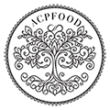

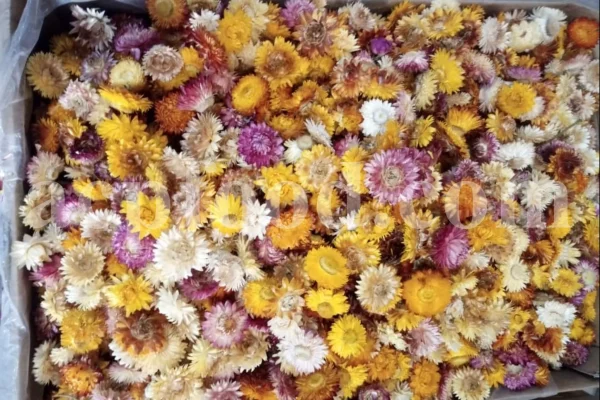
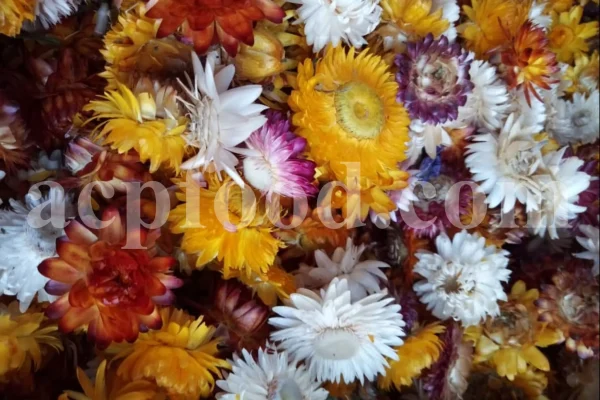
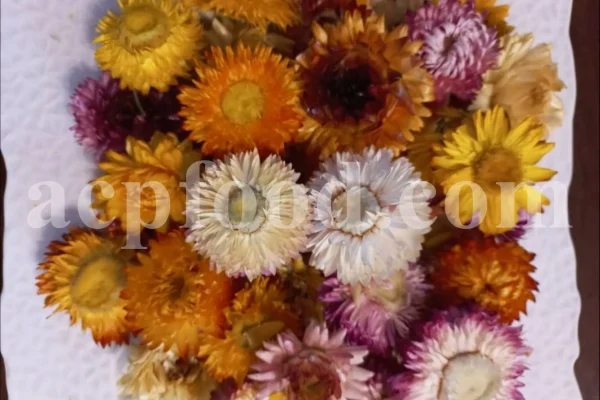

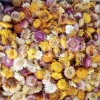

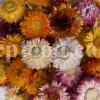
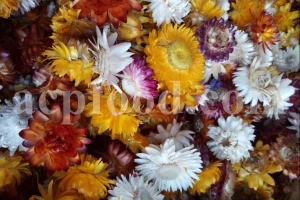
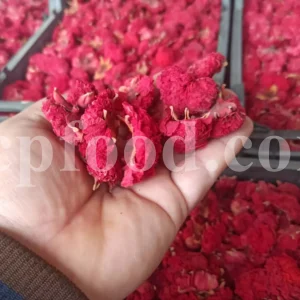
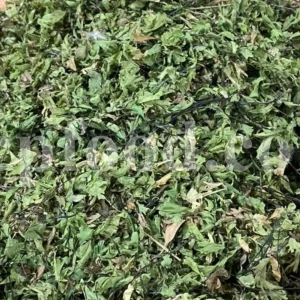
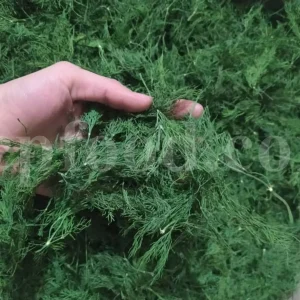
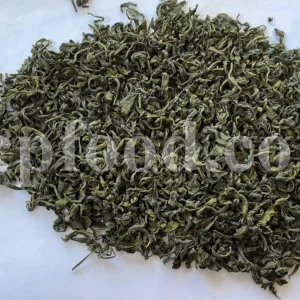
Reviews
There are no reviews yet.